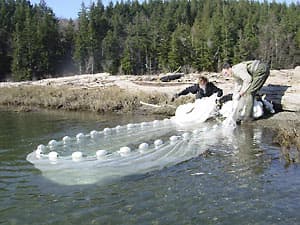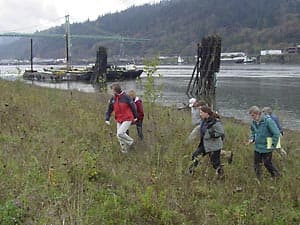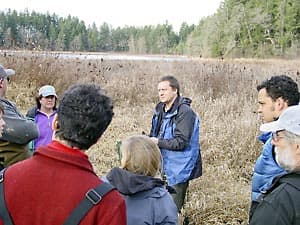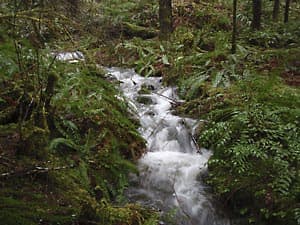Research & Assessment
Research and assessment are fundamental to the success of watershed and habitat conservation efforts. NWI biologists conduct a wide variety of habitat and watershed related studies, from monitoring the success of specific restoration projects to whole watershed and regional analyses of habitat and species.

Nearshore Fish Survey of Tarboo-Dabob Bay
NWI and Port Townsend Marine Science Center collaborated on a nearshore fish survey in Tarboo-Dabob Bay, funded by the Jefferson County Marine Resources Committee. This study provides the first comprehensive documentation of the use of Tarboo-Dabob Bay by a diversity of marine and anadromous fish species, including juvenile summer chum salmon and Chinook salmon. The study suggests that summer chum may out-migrate from their natal stream and adjacent estuarine habitat within a matter of days or weeks to range widely in Hood Canal and spend up to three months in non-natal rearing areas that may be critically important for juvenile rearing. Read the full report...

Salmon-Safe
Salmon-Safe is one of the nation's leading regional eco-labels, with more than 60,000 acres of farm and urban lands certified in Oregon, Washington, and California. For a decade, NWI has served as a scientific advisor to Salmon-Safe, establishing standards for landscape management practices that help protect water quality and salmon habitat. NWI biologist Peter Bahls led the development of Salmon-Safe’s park and corporate campus standards, and has served as team leader on certification assessments at over 20 locations, including University of Washington, City of Portland (OR) Parks and Recreation Department, and Nike World Headquarters.

Error in State Shoreline Designation for Lakes of Washington
In an extensive study of 8,888 lakes in Washington State, NWI and Washington Trout found that an astonishing 25 percent of the lakes that meet standards for management under the Shoreline Management Act were measured incorrectly, and are therefore not protected. Due to simple errors in measurement, the study reveals that many small and mid-sized lakes in Washington elude shoreline protection under state law. Read the full report...

How Healthy are Healthy Stocks?
NWI Biologist Peter Bahls conducted case studies of three salmon and steelhead stocks in Oregon and Washington for the Native Fish Society. The studies of summer steelhead of the Middle Fork John Day River, Sol Duc River winter steelhead, and Wilson River fall Chinook include an assessment of their population status, threats, and monitoring recommendations. Bahls found that while previously considered “healthy stocks”, they were better described as "less sick”, representing populations that were still at substantial risk of decline due to habitat, fish harvest, hatchery, and/or hydropower related effects. Read the full report...

Tarboo Watershed Program
NWI conducts myriad habitat and salmon related research and monitoring projects in the Tarboo watershed. A comprehensive watershed assessment was conducted in 2002-03, including water quality monitoring, historic analysis, and habitat and juvenile coho surveys. NWI conducts intensive annual spawning surveys for coho salmon, chum salmon, and steelhead. Restoration projects are monitored on an individual basis. Currently, NWI is conducting experimental planting trials.

Forests for the Future
Northwest Watershed Institute worked with biologists, foresters, local citizens, and conservation groups to evaluate 45 blocks of state timberland in East Jefferson County, comprising 23,457 acres, to determine their values for timber, recreation, and wildlife. The Public Lands Group made recommendations on how to conserve these timber lands and their resources over the long term as part of the larger forest land base in East Jefferson County. Read the full report...
